Flawless Skin: Is It Possible To Get One Using These 20 Home Remedies?
Perfect skin is not hard to achieve if you have a few simple ingredients on hand at home!

Image: Shutter
We all dream about having flawless skin. With the number of beauty and skincare products coming up every day filled with several harsh chemicals, many prefer to use natural alternatives. While a balanced diet, physical exercise, adequate sleep, and a healthy lifestyle go a long way in contributing to glowing skin, there are a few natural ingredients you can use from your pantry to give you healthy and happy skin. In this article, we explore the top 20 home remedies and foods you can include in your daily diet to give you perfect, impeccable skin. Scroll down to know more!
In This Article
20 Simple Home Remedies That Can Support Your Idea Of Flawless Skin
- Apple Cider Vinegar
- Aloe Vera
- Alum
- Coconut Oil
- Castor Oil
- Rosehip Oil
- Almond Oil
- Green Tea Ice Cubes
- Garlic
- Honey
- Best Juices
- Oats
- Rice Water
- Rose Water
- Turmeric
- Ubtan
- Yogurt
- Sugar Scrub
- Papaya
- Raw Milk
1. Apple Cider Vinegar
ACV contains mild acids that can exfoliate the dull and pigmented skin cells and lighten scars and make it blemish-free. ACV is thought to have astringent properties that can tone your skin and improve its appearance. It also helps balance your skin’s pH level.
Note: Add some aloe vera gel to counter the acidity of the vinegar. However, you may want to use this remedy with caution as ACV may cause contact dermatitisi An allergic skin condition where you experience skin rashes and irritation after coming in contact with an irritant or allergen. , hyperpigmentation,i A harmless and common skin condition in which skin patches become darker than the surrounding areas due to excess melanin production. and skin damage with improper use in some individuals. Avoid aloe vera on the skin as well if you have allergy-prone or sensitive skin.
You Will Need
- 1 teaspoon apple cider vinegar
- 2 teaspoons rose water
- Cotton ball
What You Have To Do
- Mix ACV and rose water and dab this mixture on the spots, blemishes, scars, and pigmented areas of your face.
- Let it dry for 10 minutes.
- Rinse it off with water.
How Often You Should Do This
Once every day.
2. Aloe Vera
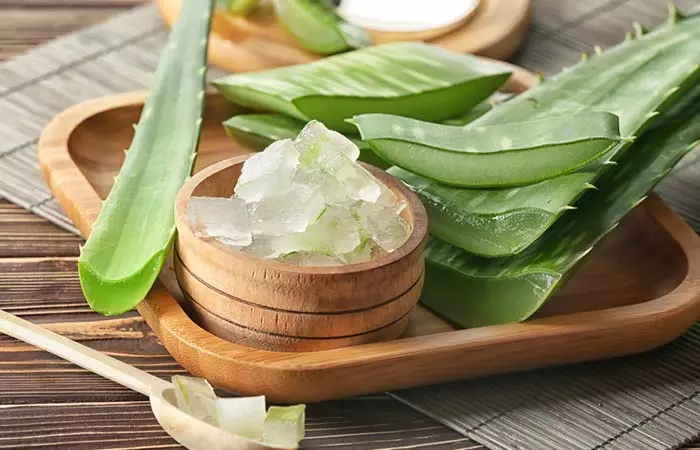
Aloe vera contains bradykinase, an enzyme that helps reduce skin inflammation. It also contains essential amino acids and salicylic acid that possess antibacterial properties. Aloe vera has a moisturizing and anti-aging effect on your skin. It protects your skin from harmful UV rays. Overall, it is a wonderful remedy for healthy, hydrated, and soft skin (1).
You Will Need
An aloe vera leaf
What You Have To Do
- Cut the leaf from the aloe plant and slice it
- Be wary of the thorns present on the leaf’s edges.
- Scoop out the gel present inside and transfer it to an airtight container.
- Apply some of this gel to your entire face and massage it in.
- Leave this on for at least an hour before washing it off with warm water.
- Store the remaining gel in a cool place.
If you do not own an aloe vera plant, buy a bottle of organic aloe gel from the market.
Note: Conduct a patch test on your arm before using aloe vera on your face as some individuals react adversely to the natural plant gel. Avoid it if you have sensitive or allergy-prone skin.
How Often You Should Do This
Once every day.
3. Alum
Alum can help protect your skin against certain allergies
(2). It has antioxidant and anti-inflammatory properties (3). These properties can protect your skin from free radical damage and reduce acne.
You Will Need
- 1 teaspoon alum powder
- 1 tablespoon honey
What You Have To Do
- Make a paste with the ingredients.
- Apply this as a face pack and leave it to dry for 10 minutes.
- Wash the pack off with tepid water.
How Often You Should Do This
2 times a week.
4. Coconut Oil
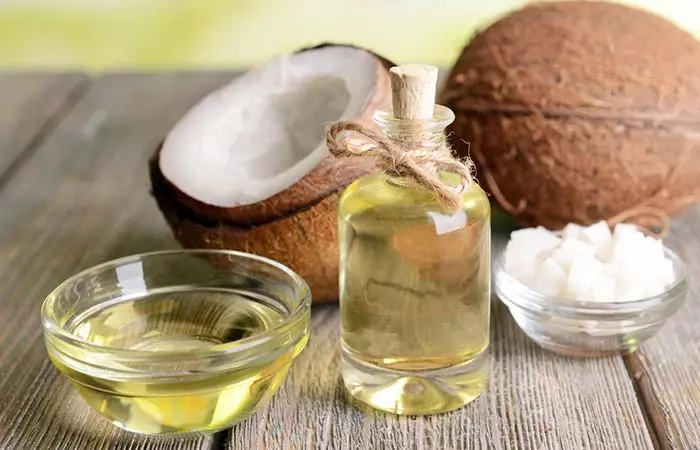
The benefits of coconut oil for maintaining healthy skin are not unknown. It has antimicrobial, anti-inflammatory, antioxidant, and skin moisturizing properties (4),(5).
You Will Need
A few drops of organic coconut oil
What You Have To Do
- Cleanse your face and pat it dry.
- Massage the facial skin with coconut oil and leave it on overnight.
- People with oily skin can add a drop or two of coconut oil to their regular moisturizer and apply it every night.
Note:
Coconut oil is comedogenic and should be avoided by those with oily or acne-prone skin.
How Often You Should Do This
Every night before going to bed.
5. Castor Oil
Castor oil is rich in ricinoleic acid, a fatty acid that is a skin-conditioning agent
(6). It can also help restore the natural sebum production. The steam will open up your pores and allow the oil to penetrate the deeper layers of your skin.
You Will Need
- 2-3 drops castor oil
- Hot water (in a bowl)
- A big towel
What You Have To Do
- Steam your face by bending over the hot water bowl and covering your head with the towel.
- After 2-3 minutes, pat your skin dry gently and apply the castor oil.
- Massage it in thoroughly.
- Leave it on overnight.
How Often You Should Do This
Once every 4-5 days. Castor oil can be applied (without steam) every night as well.
 Quick Tip
Quick Tip6. Rosehip Oil
This essential oil is a natural moisturizer as it contains a high amount of polyunsaturated fatty acids (PUFA) (7). It can protect your skin from inflammation and oxidative stress. Rosehip oil can also improve skin tone and texture and has shown promising effects on inflammatory skin conditions (8).
You Will Need
3-4 drops rosehip oil
What You Have To Do
Pat the oil on your face after you have cleansed it.
How Often You Should Do This
Every night.
7. Almond Oil
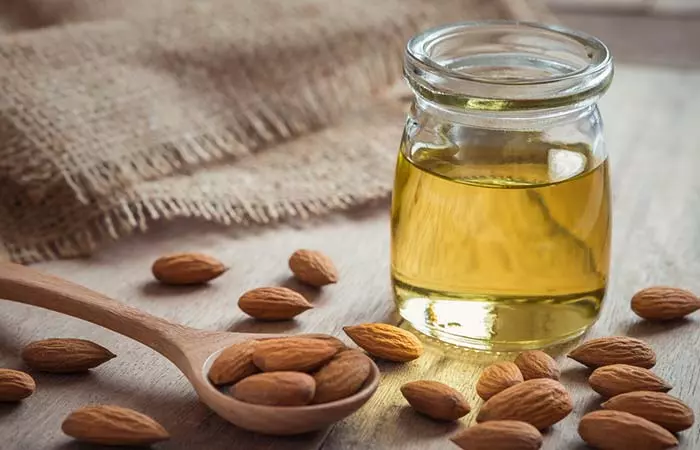
Almond oil is anemollienti An agent or substance that helps hydrate the skin by forming a protective barrier and sealing the moisture in the skin. and can keep the skin hydrated. It also rejuvenates the skin, improves skin tone, and reduces the appearance of scars or marks (9).
You Will Need
2-3 drops almond oil
What You Have To Do
- Warm up the oil between your fingertips and massage it into your face.
- Leave the oil on overnight.
How Often You Should Do This
Every night.
8. Green Tea Ice Cubes
The antioxidants in green tea can protect your skin from the damage caused by UV rays. It also has anti-inflammatory and antimicrobial properties that prevent and treat acne and skin disorders (10).
You Will Need
- 1 green tea bag
- A cup of hot water
- An ice tray
What You Have To Do
- Brew some fresh green tea by steeping the tea bag in hot water for a few minutes.
- Remove the teabag and allow it to cool down.
- Pour it into the ice tray and freeze it.
- Pat the green tea ice cube gently all over your face. Let it dry naturally.
- Rinse your face with plain water.
How Often You Should Do This
Onc every day.
9. Garlic
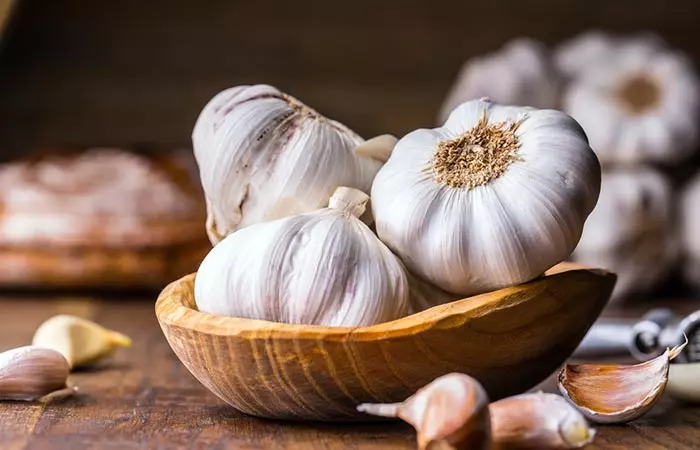
Garlic can be used for spot treatment of scars, acne, and other marks on the face. It can help in treating skin conditions, like psoriasis, and also exhibits anti-aging and skin rejuvenating effects (11).
You Will Need
1 garlic clove
What You Have To Do
- Crush the garlic and apply it to the marks and scars on your face.
- Leave it on for five minutes and then rinse it off.
- Pat dry and apply a moisturizer.
How Often You Should Do This
Do this daily.
10. Honey

Honey has humectanti A hydrating agent that can attract water from the air and deep skin layers to keep its surface moist and hydrated. properties that can moisturize your skin and make it supple. Its anti-inflammatory and antibacterial properties can also help treat acne, burns, wounds, eczema, psoriasis, and other skin disorders (12).
You Will Need
- 1-2 teaspoons honey
- 1 teaspoon cinnamon powder
What You Have To Do
- Make a thick paste with the honey and cinnamon powder.
- Apply it to the face and leave it on for 15-20 minutes.
- Wash your face clean with water.
How Often You Should Do This
1-2 times a week.
11. Best Juices For Flawless Skin
(a) Lemon Juice
Lemon juice has acidic properties and acts as a natural bleach for the skin. It is one of the most commonly used skin-lightening agents (13). It contains citric acid that can help reduce acne (14).
You Will Need
1/2 lemon
What You Have To Do
- Rub the lemon on the face.
- Leave the juice on for 5-7 minutes.
- Wash it off with lukewarm water.
How Often You Should Do This
Once every day for a few days and then reduce usage to 2 times a week.
(b) Vegetable Juice
Vegetables contain antioxidant, anti-inflammatory, and antimicrobial compounds, vitamins, and minerals that can promote skin health. Ginger exhibits anti-inflammatory effects, while the nutrients from carrots can rejuvenate your skin from the inside (15), (16).
You Will Need
- 4 carrots
- 1/2 inch-long piece ginger
- ½ cup of water
What You Have To Do
- Peel the carrots and ginger and cut both of them into small pieces.
- Blend them with water to get a thick juice.
- Drink this at room temperature or after chilling.
How Often You Should Do This
Every day.
(c) Green Juice
The nutrients from the ingredients of green juice can help refresh, restore, and rejuvenate the skin.
You Will Need
- 3 cucumbers
- ½ cup romaine lettuce
- A handful of mint leaves
- 2 tablespoons lemon juice
- ½ cup of water
What You Have To Do
- Chop everything into small pieces and blend well.
- Add lemon juice and water to get a juice-like consistency.
- Drink this healthy green juice.
How Often You Should Do This
Every day.
(d) Potato Juice
Potatoes are packed with anti-inflammatory properties that help soothe irritated skin and reduce acne (17). Anecdotal evidence suggests that many people have benefited from using potatoes for the skin. It can help reduce sunburn, tan, and spots and promote glowing skin.
You Will Need
½ potato
What You Have To Do
- Grate the potato and squeeze out the juice from it.
- Apply this juice to the face and let it dry for 10-12 minutes.
- Rinse it off with tepid water.
How Often You Should Do This
Once daily.
(e) Tomato Juice
Tomato has anti-aging properties and also acts as a sunscreen. It also contains lycopene, an antioxidant that can help you achieve clear and healthy skin (18).
You Will Need
1 small tomato
What You Have To Do
- Chop and mash the tomato.
- Apply this pulp to the face.
- Keep it on for 10-12 minutes and then rinse it off.
How Often You Should Do This
Once every day for a week. Continue using tomato juice on your face once every 4-5 days.
12. Oats
This pack helps in brightening the skin and also reduces dark spots, scars, and makes it unblemished. Oatmeal cleanses the skin and soothes inflammation on the skin surface. It also helps to tighten the pores, balances skin pH, and makes it smooth and even-toned (19), (20), (21).
You Will Need
- 1 tablespoon tomato pulp
- 1 tablespoon yogurt
- 1-2 teaspoons oatmeal
What You Have To Do
- Mix all the ingredients to get a paste.
- Apply it to the face and leave it on for 15 minutes.
- Wash the face pack off with cold water.
How Often You Should Do This
1-2 times a week.
13. Rice Water
Rice water contains vitamins, minerals, and other anti-aging agents that rejuvenate the skin and tighten it (22). It also helps to exfoliate the skin and remove dead cells and impurities.
You Will Need
- ½ cup of raw rice grains
- 2-3 cups water
What You Have To Do
- Rinse the rice with a cup of water.
- Throw away this water and soak the rice in the remaining water for 15-30 minutes.
- Rub the rice with your fingers in the water so that the water turns cloudy.
- Strain the rice and store the water in an airtight bottle.
- After waiting for a day, apply some of this water to your face and massage for a few minutes.
- Rinse the rice water after 10 minutes.
How Often You Should Do This
Once every day.
Tee, a lifestyle vlogger, used rice water for 3 months and observed their effects on her skin. She says, “The skin is visibly smooth, brighter, hydrated, and it is overall looking glowing and healthy (i).” She also felt a significant difference when applying makeup that went on smoothly, with lesser bumps. Her husband, who also followed the same skin routine, noted that the rice water healed burn and acne scabs.
14. Rose Water
Rosewater is commonly used as a skin toner (23). It balances the skin’s pH and improves circulation. It helps soothe irritated skin and fight infections. It can also heal acne scars and other marks on the skin. Anecdotal evidence states that it has skin refreshing and skin brightening effects.
You Will Need
- 2 tablespoons rose water
- 1 teaspoon lemon juice or 5-6 drops olive oil
What You Have To Do
- Add lemon juice to the rose water if you have acne-prone and/or oily skin. For dry skin, add the olive oil.
- Mix well and apply the mixture to the face.
- Let this sit for 10-15 minutes before rinsing it off.
How Often You Should Do This
Once every alternate day.
15. Turmeric
The curcumin in turmeric has antioxidant and anti-inflammatory properties that can promote skin health and give it a natural glow. Turmeric also possesses wound healing properties and can help treat scars, marks, and make it spotless (24).
You Will Need
- 1 tablespoon yogurt
- ¼ teaspoon turmeric powder
What You Have To Do
- Add the turmeric to the yogurt and mix well.
- Apply this as a thin layer on your face.
- Wash it off after 15 minutes.
How Often You Should Do This
2 times a week.
 Quick Tip
Quick Tip16. Ubtan
Ubtan exhibits free radical scavenging and tyrosinasei A copper-containing enzyme in skin tissues that activates melanin production and may darken the skin. inhibiting activities (25). This means that it can protect your skin from free radical damage and lighten the skin tone with consistent use. While gram flour cleanses and exfoliates the skin, sandalwood powder soothes and smoothens the skin. Together, they make a potent combination to treat blackheads, acne, dark spots, and blemishes. Regular use will leave your skin radiant, soft, and supple.
You Will Need
- 2 teaspoons gram flour
- 1 teaspoon sandalwood powder
- Milk or rose water
What You Have To Do
- Mix the gram flour and sandalwood powder.
- Add milk to this mixture and mix well. Use rose water instead of milk if you have acne-prone skin or oily skin or are allergic to dairy.
- Apply the face pack and let it dry.
- Rinse it off with lukewarm water.
How Often You Should Do This
Once a week.
17. Yogurt
Studies show that yogurt facial masks can improve moisture, brightness, and elasticity of the skin(26). The lactic acid in yogurt unclogs pores, reduces pore size, and exfoliates the dead skin cells. This results in a tightening effect on your skin and lightens blemishes.
Caution:
Avoid this remedy if you are allergic to dairy products.
You Will Need
1-2 tablespoons yogurt
What You Have To Do
- Apply the yogurt on your face and leave it on for 10 minutes.
- Rinse your face with lukewarm water.
How Often You Should Do This
Every alternate day.
18. Sugar Scrub
Sugar acts as a good exfoliator. It removes dead cells, excess oils, and impurities. Blood circulation to the skin also improves due to the scrubbing motion. This scrub will leave your skin glowing and youthful.
You Will Need
- 1 tablespoon white sugar
- 1 tablespoon brown sugar
- Water
What You Have To Do
- Add some water to both the sugars in a bowl and mix well.
- Rub this mixture gently on the face for 2-3 minutes.
- Wash it off with lukewarm water.
How Often You Should Do This
Once every 4-5 days.
19. Papaya
Papaya contains antioxidants like lycopene, which helps delay wrinkles and fine lines. It also contains skin brightening and exfoliating enzymes like papain (27). It unclogs your pores and eliminates blackheads. It contains vitamins A and C that are essential for optimum skin health.
You Will Need
2-3 pieces ripe papaya
What You Have To Do
- Mash the papaya and apply it to the face.
- Massage for 2-3 minutes and then leave the papaya pulp on for another 10 minutes.
- Wash it off with cold water.
How Often You Should Do This
Once a week.
20. Raw Milk For Flawless Skin
Raw milk contains lactic acid, which can help exfoliate the skin. It improves the appearance of fine lines and wrinkles and keeps your skin soft (28). It also moisturizes the skin and keeps it supple.
Caution: People with an allergy to milk should not use this remedy.
You Will Need
- 2 tablespoons of raw milk
- Cotton ball
What You Have To Do
- Dip the cotton ball in milk and apply it on your face.
- Let it dry naturally for 10-12 minutes and then rinse it off.
How Often You Should Do This
2-3 times a week.
While the remedies listed above can help keep your skin healthy, you can also learn more about other natural ways to get glowing skin. Apart from following these remedies, making certain changes in your lifestyle may also give you clear, radiant skin. Check out some tips in the following section.
Key Takeaways
- Applying fresh aloe vera on the face can help prevent skin inflammation and infections.
- Including rosehip oil in your skincare routine can reduce oxidative stress-related skin aging.
- Rubbing green tea ice cubes on the face is a great way to treat sun damage and acne.
- Potato juice can quickly fade your sun tan.
- Adding honey to your face pack not only keeps your skin moisturized but also prevents various infections.
Tips For Flawless Skin
1. Eat Healthy
The less fried and processed foods you eat, the less your skin has to work to keep it oil-free and healthy.
2. Cleanse Well
Dirt, grime, and pollution can leave your skin looking dull and lifeless. Your skin needs a rigorous cleansing regimen with the right products to ensure that it remains clean and supple. Remember to wash your face after you are back home.
3. Exfoliate
Your skin needs to get rid of the constantly accumulating dead skin, dirt, and grime that simple cleansing cannot get rid of. Hence, exfoliating with a good scrub, like the sugar scrub we have mentioned in the remedies above, at least once every two days can help.
4. Pamper Your Skin
The best way to show your skin some love is by pampering it as much as you can. Apart from following a regular skincare regimen, regular clean-ups, massages, and such treatments will help increase blood circulation and refresh your skin.
5. Water Is Essential
Hydration is the key to well-nourished, soft, and glowing skin. Drink 8-10 glasses of water every day. You can also drink healthy juices and smoothies to keep your skin hydrated.
6. Protect Your Skin From The Sun
There’s no point in helping your skin so much from the inside if you are not going to help it from the outside as well. Cover yourself when you are out in the afternoon sun. Also, use a sunscreen with a minimum SPF of 30 to protect your skin from the harmful UV rays.
7. Clean Your Hair
Sometimes, bumps, acne, and other skin problems can be caused due to dandruff from the hair coming in contact with the skin. Wash your hair with a medicated anti-dandruff shampoo to take that step towards healthy skin.
8. Go Natural
Natural skin care products are safer than chemical ones as the chances of side effects with them are remarkably low. Hence, try to go for natural remedies whenever possible.
9. Use Cosmetic Products Judiciously
Give your skin a breather. Ditch makeup once in a while and go au naturel.
10. Get Proper Sleep
While sleeping, your body goes into the repair mode and rejuvenates the skin cells. Lack of sleep shows on your skin in the form of dark circles, saggy skin, and a dull complexion. Sleep for at least 8 hours. Make sure you sleep with your hair tied back as the residue of the hair oils can clog the skin pores, resulting in blackheads and dull skin.
According to one study, sleep deprivation causes skin concerns such as dullness and the likelihood of fine wrinkles. This study included 2871 people (67.3%) with cutaneous diseases and 863 people (32.7%) without. SD was significantly higher in CD patients (71.2% vs 32.7% in the control group). CD patients were more likely to develop SD than control participants. With odds ratios of 1.670, 1.625, and 1.326, respectively, urticaria, discomfort, and intermediate feelings were significant predictors of SD.
11. Avoid Stress
Stress causes excess oil secretion, which, in turn, causes your skin to absorb more dirt. This can lead to skin problems. Relax by doing yoga or meditation.
12. Stop Touching Your Face
Touching your face transfers dirt and bacteria from surfaces and objects to your skin. This may lead to an increase in breakouts and skin issues. Keep your hands away from your face to help maintain clear and healthy skin.
13. Quit Smoking
Smoking may damage the skin cells, leading to premature aging and a dull complexion. Avoid inhaling secondhand smoke as well to reduce the risk of skin problems.
14. Avoid Popping Pimples
Popping pimples can worsen acne, spread infection, and may even lead to scarring and pigmentation. Let the pimples heal naturally or seek professional help to get rid of them.
These tips can prevent your skin from getting worse and also improve its appearance. Up next are some recommendations for what you should eat to get flawless skin.
What To Eat To Get Flawless Skin Fast
- Healthy fats from foods, like avocado, olive oil, and nuts.
- Foods rich in antioxidants, like tomato, kale, spinach, Swiss chard, wheat germ, carrots, pumpkin, celery, cucumber, watermelon, papaya, sweet potatoes, etc.
- Omega-3-containing foods, like sardines, flax seeds, walnuts, and chia seeds.
- Protein foods, such as lean meat, turkey, chicken, eggs, and soybeans.
Infographic: 5 Best Home Remedies For Flawless Skin
Most of us rely on natural remedies for our skin care woes. The ingredients are readily available, sustainable, and rarely cause side effects unless you are allergic to them and know how to use them properly. While you can use any of the remedies discussed in the article, we have picked the top 5 ingredients that are safe, can reduce hyperpigmentation and acne, and keep your skin radiant, hydrated, and smooth. Scroll down to check them out. Illustration: StyleCraze Design Team

To get flawless perfect skin, you need to maintain a balanced diet, a healthy lifestyle and drink lots of water. In addition, you can make use of several natural ingredients like aloe vera gel, coconut oil, castor oil, green tea ice cubes, rosehip oil, apple cider vinegar, honey, turmeric, papaya, raw milk, and yogurt that help to attain radiant skin. However, it is always essential to conduct a patch test for DIY recipes and wait for at least 24 hours before applying them to the face. If you are struggling with major skin issues, it is recommended to consult your dermatologist before using home remedies. Natural ingredients are rich in various nutrients, such as vitamins and antioxidants that nourish the skin and help address issues like inflammation and dryness without side effects. Using these ingredients may help maintain a glowing, healthy complexion while reducing the possibility of irritation from synthetic additives. Certain foods to include in your diet for good skin are those that are rich in antioxidants, omega-3 fatty acids, healthy fats, and proteins. In addition, you must apply sun protection, stay hydrated, and mitigate stress for flawless skin.
Frequently Asked Questions
How do celebrities have flawless skin?
Celebrities invest time, effort, and money to keep their skin looking flawless. Regular visits to dermatologists, regular use of sunscreen and skin care treatments like chemical peels, laser, photo facials, and botox help them maintain their skin health.
How is Korean skin so flawless?
Koreans follow a rigorous skin care routine comprising the CTM (cleanse-tone-moisturize). They also use well-formulated beauty products free of harsh chemicals and follow a healthy diet and lifestyle.
Can anyone get flawless skin?
Yes, it is possible to achieve flawless skin with a balanced diet and a healthy lifestyle if there are no underlying medical skin conditions.
Can I achieve flawless skin if I have acne or other skin conditions?
Acne can be treated with medications, skin treatments, a healthy lifestyle, and regular skincare. However, certain types of skin conditions caused by hormonal or other biological issues can only be treated with proper medical diagnosis and treatment.
How long does it take to achieve flawless skin?
It can take anywhere from 2 to 5 months for a skincare, diet, and lifestyle routine to show its effects.
References
Articles on StyleCraze are backed by verified information from peer-reviewed and academic research papers, reputed organizations, research institutions, and medical associations to ensure accuracy and relevance. Read our editorial policy to learn more.
- ALOE VERA: A SHORT REVIEW, Indian Journal of Dermatology, US National Library of Medicine, National Institutes of Health.
https://www.ncbi.nlm.nih.gov/pmc/articles/PMC2763764/ - Aluminum sulfate significantly reduces the skin test response to common allergens in sensitized patients, Clinical and Molecular Allergy, US National Library of Medicine, National Institutes of Health.
https://www.ncbi.nlm.nih.gov/pmc/articles/PMC1395326/ - An Experimental Study of the Anti-oxidant and the Anti-inflammatory Effects of Alum and Burnt Alum, Journal of Pharmacopuncture, US National Library of Medicine, National Institutes of Health.https://www.ncbi.nlm.nih.gov/pmc/articles/PMC4331937/
- Novel antibacterial and emollient effects of coconut and virgin olive oils in adult atopic dermatitis, Dermatitis: contact, atopic, occupational, drug, US National Library of Medicine, National Institutes of Health.
https://pubmed.ncbi.nlm.nih.gov/19134433/ - Cocos nucifera (L.) (Arecaceae): A phytochemical and pharmacological review, Brazilian Journal of Medical and Biological Research, US National Library of Medicine, National Institutes of Health.
https://www.ncbi.nlm.nih.gov/pmc/articles/PMC4671521/ - Final Report on the Safety Assessment of Ricinus Communis (Castor) Seed Oil, Hydrogenated Castor Oil, Glyceryl Ricinoleate, Glyceryl Ricinoleate SE, Ricinoleic Acid, Potassium Ricinoleate, Sodium Ricinoleate, Zinc Ricinoleate, Cetyl Ricinoleate, Ethyl Ricinoleate, Glycol Ricinoleate, Isopropyl Ricinoleate, Methyl Ricinoleate, and Octyldodecyl Ricinoleate1, International Journal of Toxicology, Sage Journals.
https://journals.sagepub.com/doi/10.1080/10915810701663150 - Characterization of Rosehip (Rosa canina L.) Seed and Seed Oil, International Journal of Food Properties, Taylor and Francis Online.
https://www.tandfonline.com/doi/full/10.1080/10942912.2013.777075 - Anti-Inflammatory and Skin Barrier Repair Effects of Topical Application of Some Plant Oils, International Journal of Molecular Sciences, US National Library of Medicine, National Institutes of Health.
https://www.ncbi.nlm.nih.gov/pmc/articles/PMC5796020/ - The Uses and Properties of Almond Oil, Complementary Therapies in Clinical Practice, US National Library of Medicine, National Institutes of Health.
https://pubmed.ncbi.nlm.nih.gov/20129403/ - Green tea in dermatology – myths and facts, Journal of the German Society of Dermatology, Wiley Online Library.
https://onlinelibrary.wiley.com/doi/full/10.1111/ddg.12737 - Garlic in dermatology, Dermatology Reports, US National Library of Medicine, National Institutes of Health.
https://www.ncbi.nlm.nih.gov/pmc/articles/PMC4211483/ - Honey: A Therapeutic Agent for Disorders of the Skin, Central Asian Journal of Global Health, US National Library of Medicine, National Institutes of Health.
https://www.ncbi.nlm.nih.gov/pmc/articles/PMC5661189/ - The Hunt for Natural Skin Whitening Agents, International Journal of Molecular Sciences, US National Library of Medicine, National Institutes of Health.
https://www.ncbi.nlm.nih.gov/pmc/articles/PMC2801997/ - Effects of Cosmetic Formulations Containing Hydroxyacids on Sun-Exposed Skin: Current Applications and Future Developments, Dermatology Research and Practice, US National Library of Medicine, National Institutes of Health.
https://www.ncbi.nlm.nih.gov/pmc/articles/PMC3362829/ - Evaluation of the Topical Anti-Inflammatory Activity of Ginger Dry Extracts From Solutions and Plasters, Planta Medica, US National Library of Medicine, National Institutes of Health.
https://pubmed.ncbi.nlm.nih.gov/18058610/ - Chemical composition, functional properties and processing of carrot—a review, Journal of Food Science and Technology, US National Library of Medicine, National Institutes of Health.
https://www.ncbi.nlm.nih.gov/pmc/articles/PMC3550877/ - Health Benefits and Cons of Solanum tuberosum, Journal of Medicinal Plants Studies, Phytojournal.
https://www.plantsjournal.com/vol1Issue1/Issue_jan_2013/3.pdf - Tomato-A Natural Medicine and Its Health Benefits, Journal of Medicinal Plants Studies, Phytojournal.
https://www.phytojournal.com/archives/2012/vol1issue1/PartA/3.pdf - Oatmeal in dermatology: a brief review, Indian Journal of Dermatology, Venereology and Leprology, US National Library of Medicine, National Institutes of Health.
https://pubmed.ncbi.nlm.nih.gov/22421643/ - Anti-inflammatory activities of colloidal oatmeal (Avena sativa) contribute to the effectiveness of oats in treatment of itch associated with dry, irritated skin, Journal of Drugs in Dermatology, US National Library of Medicine, National Institutes of Health.
https://pubmed.ncbi.nlm.nih.gov/25607907/ - Colloidal oatmeal: history, chemistry and clinical properties, Journal of Drugs in Dermatology, US National Library of Medicine, National Institutes of Health.
https://pubmed.ncbi.nlm.nih.gov/17373175/ - Rice Water: A Traditional Ingredient with Anti-Aging Efficacy, Cosmetics, ResearchGate.
https://www.researchgate.net/publication/324179387_Rice_Water_A_Traditional_Ingredient_with_Anti-Aging_Efficacy - Pharmacological Effects of Rosa Damascena, Iranian Journal of Basic Medical Sciences, US National Library of Medicine, National Institutes of Health.
https://www.ncbi.nlm.nih.gov/pmc/articles/PMC3586833/ - Beneficial role of curcumin in skin diseases, Advances in Experimental Medicine and Biology, US National Library of Medicine, National Institutes of Health.
https://pubmed.ncbi.nlm.nih.gov/17569219/ - Evaluation of Ubtan – A traditional indian skin care formulation, Journal of Ethnopharmacology, US National Library of Medicine, National Institutes of Health.
https://pubmed.ncbi.nlm.nih.gov/27416804/ - Clinical efficacy of facial masks containing yoghurt and Opuntia humifusa Raf. (F-YOP), Journal of Cosmetic Science, US National Library of Medicine, National Institutes of Health.
https://pubmed.ncbi.nlm.nih.gov/22152494/ - Traditional and Medicinal Uses of Carica papaya, Journal of Medicinal Plants Studies, Phytojournal.
https://www.plantsjournal.com/vol1Issue1/Issue_jan_2013/2.pdf - Epidermal and dermal effects of topical lactic acid, Journal of the American Academy of Dermatology, US National Library of Medicine, National Institutes of Health.
https://pubmed.ncbi.nlm.nih.gov/8784274/
Read full bio of Dr Jovana Majstorovic
Read full bio of Shaheen Naser
Read full bio of Anjali Sayee
Read full bio of Monomita Chakraborty






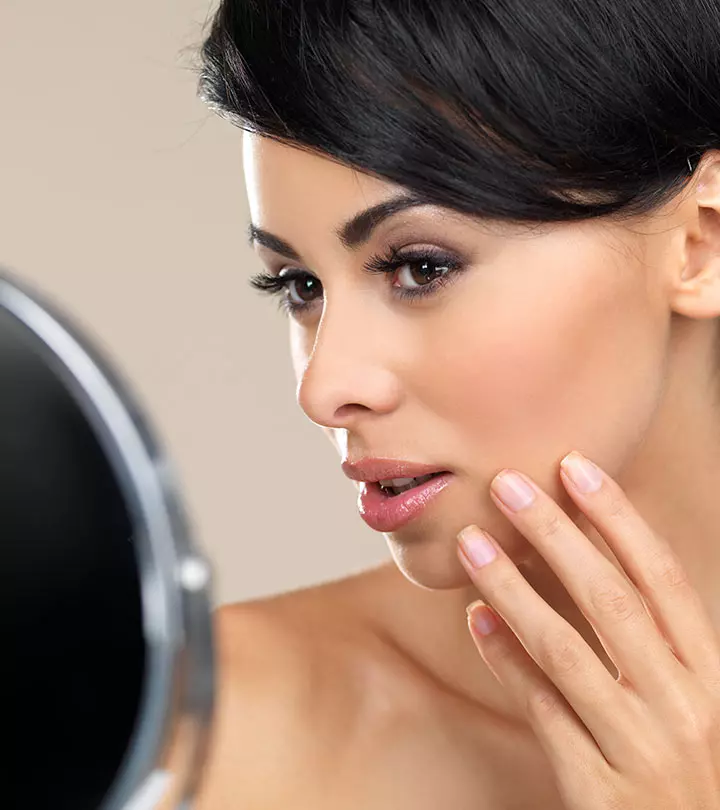
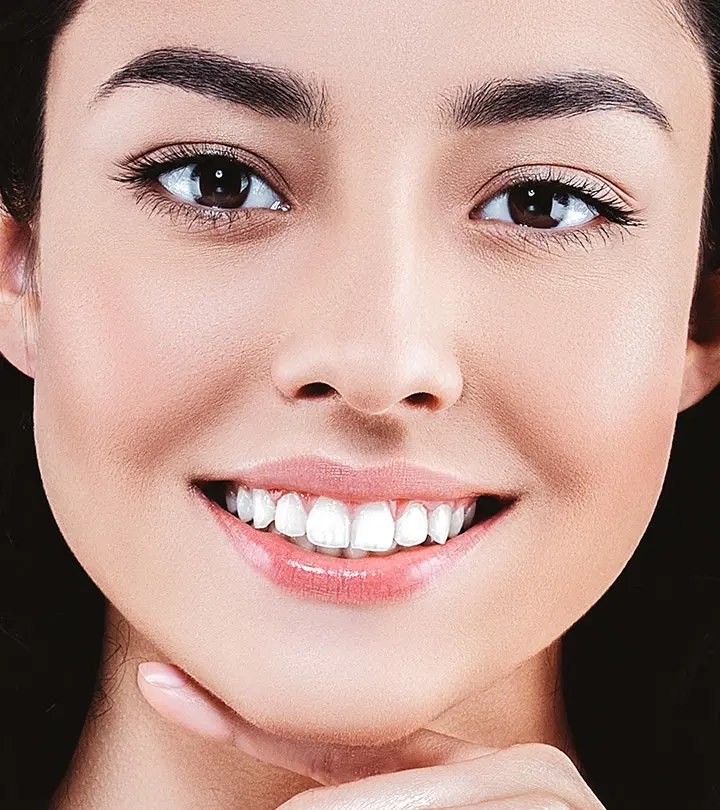

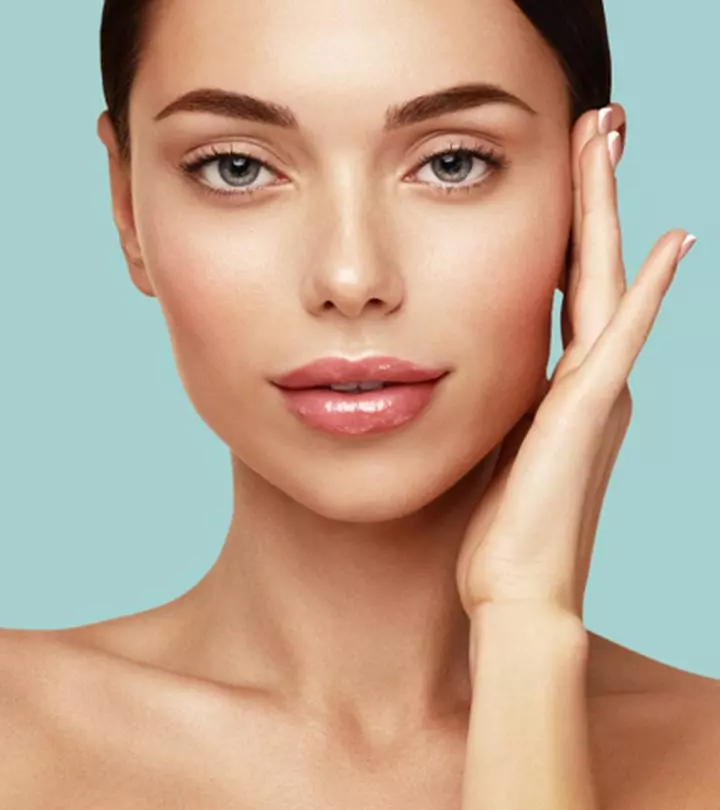
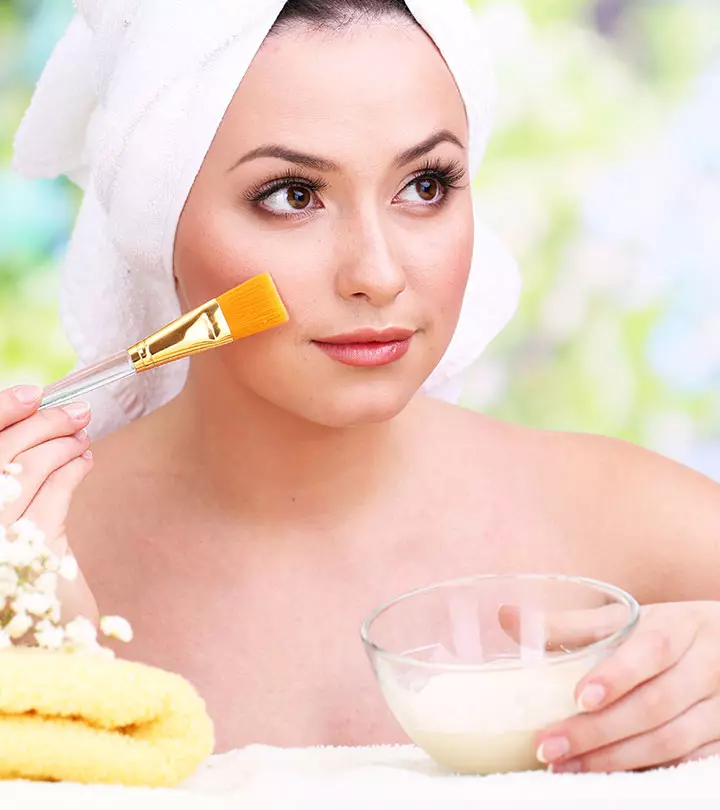
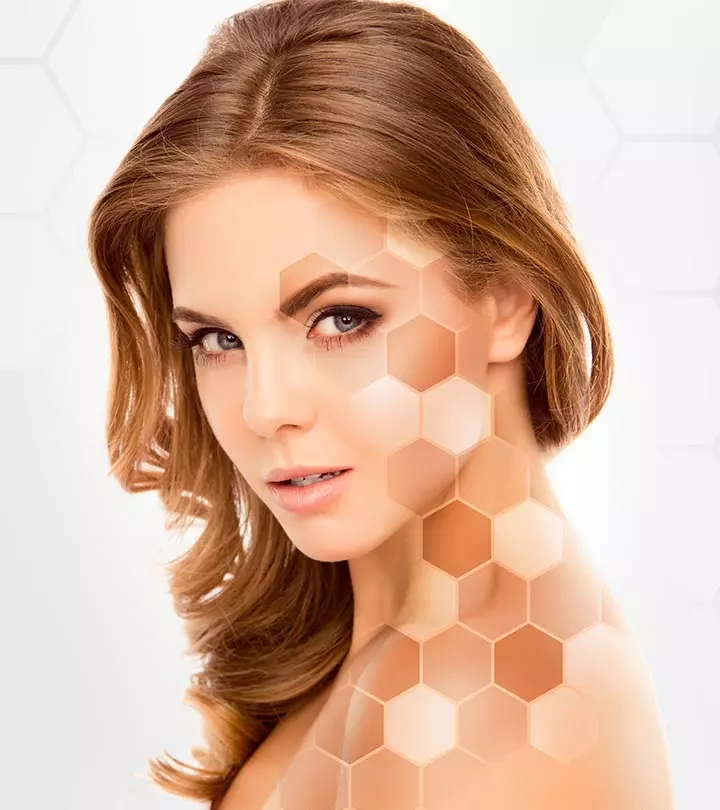
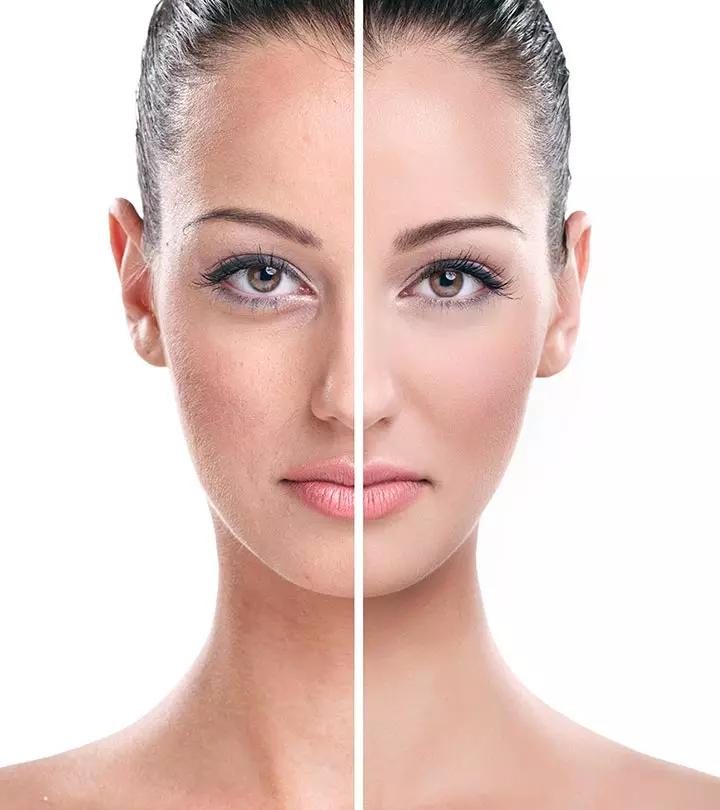




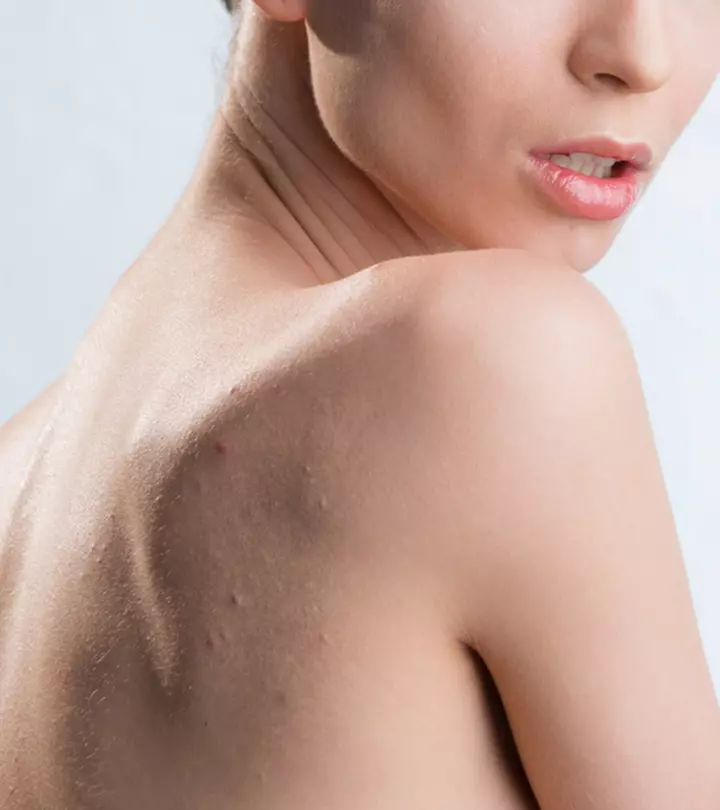


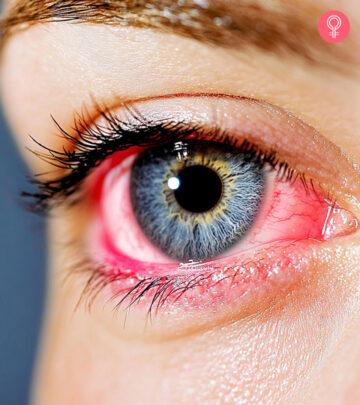

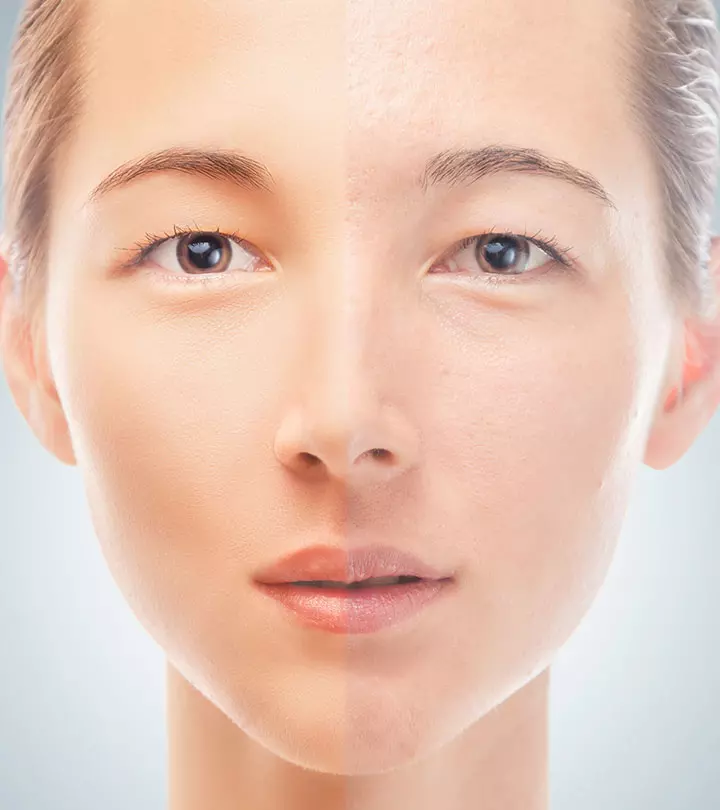
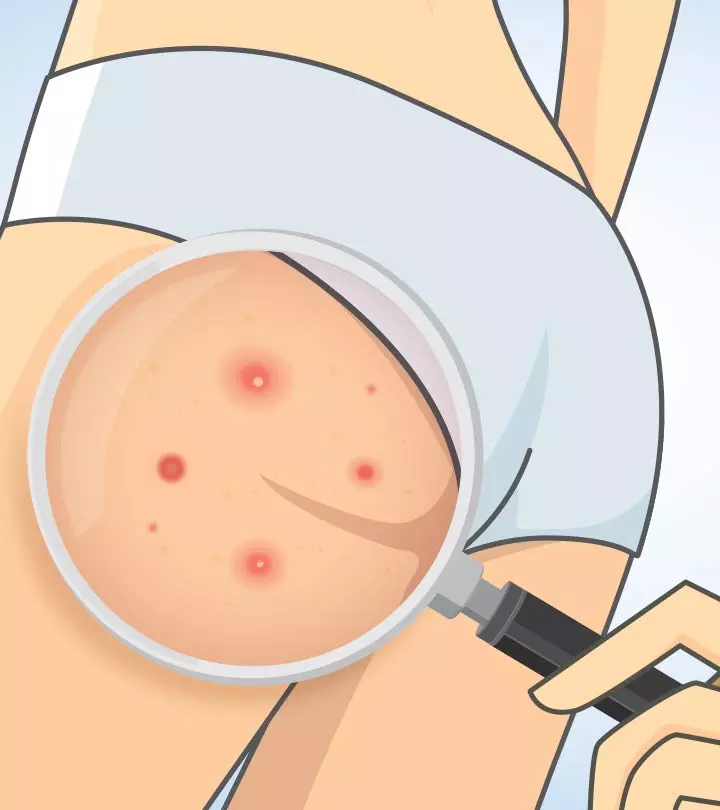



Community Experiences
Join the conversation and become a part of our empowering community! Share your stories, experiences, and insights to connect with other beauty, lifestyle, and health enthusiasts.